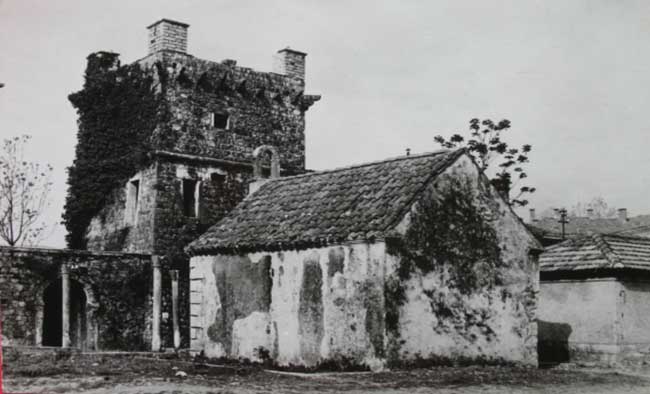Timeless Treasure: Summer House Buca
Besides Tivat’s contemporary charm, a wonderful way to learn about its history is to visit the Renaissance House Buca, also known as Buca-Lekovic.
This ancient palace belonged to the renowned Buca family of Kotor. In the 14th century, they rose to fame as prominent figures in political, social, and cultural spheres. Members of this noble family rivaled many palaces across Europe. Some of its members served in the court of French King Charles de Valois and in the Pope’s residence in Avignon.
Five-Building Complex
There are no records indicating the exact date of construction of the summer house, but the first traces of it appeared after the Kotor earthquake of 1667. At that time, it was owned by the brothers Marin and Alviz Buca. However, some details in its design and construction suggest that the complex likely existed much earlier than this period.
History of the Buca Residence
The complex initially consisted of five components: the palace, a manor house, a courtyard, a complete perimeter wall, and a promenade. All the masonry structures, along with the promenade extending from the castle to the sea, formed a single fortified structure. Surrounding the garden were 130 stone columns and a wooden structure covered with ivy. One of the columns’ brick bases was carved with a lily, the symbol of the Buca dynasty’s coat of arms. The entire complex covered an area of 120 meters long and 65 meters wide.
The complex’s most striking feature, the tower, is 15 meters high and located immediately adjacent to the main building. An inscription above the tower’s entrance indicates that it was built in 1548 by “Master Vicencije, son of Master Mihailo of Lastva.” This detail has led historians to question the complex’s date of construction. In addition, the residence housed the sacred niche of the Chapel of the Archangel Michael. Its Baroque appearance contrasted sharply with the simpler Renaissance lines.
Buce House Today
Buce House remained an iconic feature of Tivat, but began to lose its appeal as the family lost power. Fortunately, sea captain Marko Lukovic purchased the house in the 18th century and preserved it. Lukovic’s contributions ensured that the residence was rebuilt in the late 1800s, cementing its status as an integral part of the complex.
en though compared to other towns of the Montenegrin coast Tivat is less recognizable by its magnificent buildings or places which should be seen because of the great cultural and historical importance, staying in Tivat you will easily see the complex better know as the Summer cottage house Buca. Namely, this complex is found in the center of Tivat and it represents a harmonious renascence entity with the smaller number of details of the late Gothic.
The Summer cottage house originates from XVII century, and it belonged to a famous Kotor noble family Buca. The complex of the Summer cottage house Buca has 5 facilities: residential facility, economic house, church, a chapel dedicated to Sveti Mihailo (St. Michael) as well as the porch with the entrance part that is used for multiple purposes. All the facilities are made of fine white trimmed stone and are surrounded by a stonewall. The Summer cottage house Buca is revitalized for the present needs of the culture of the town Tivat, so the residential facility is turned into a gallery space while the garden serves as a summer stage, where during the tourist season interesting literary night, painting exhibitions and various other cultural events take place.
